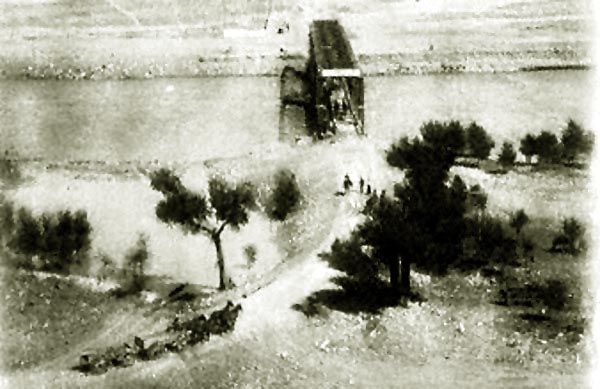
Cody Bridge, 1907.
As noted on the previous page, in 1902 a used railroad bridge was acquired to cross the Shoshone
River.
In 1895, 1897, and 1899, Wm. F. Cody and Nate Salsbury (1846-1902) acquired the right to take water from the Stinking Water
as a part of his plans for the
Shoshone Land and Irrigation Company. Financially strapped, Cody ultimately turned to the
Federal Government to take over the project. Salsbury was partner with Cody in the
Wild West show and was general manager. To him some give credit for Cody's success and
attribute Cody's subsequent problems to the fact that after Salsbury's death Col. Cody no longer had anyone to manage his affairs and
keep him away from women, liquor, and bad investments. It should be noted, however,
that in the last years of his life, Cody was a teatotaler.
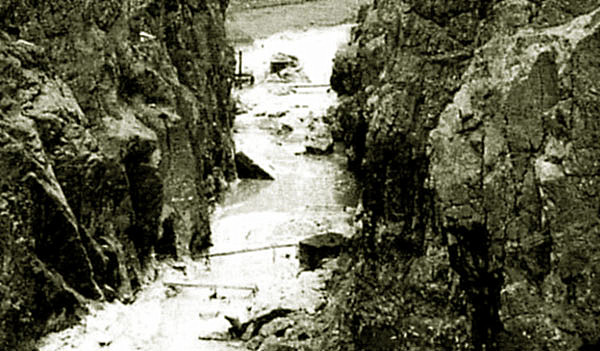
Site of Shoshone Dam, approx. 1903.
In 1903, the government took over
the project. The following year, the State Engineer, Clarence T. Johnson, reported that the
Reservoir when completed would permit the irrigation of 200,000 acres of arid land.
Installation of the Bridge assisted in the construction of the the Shoshone Dam. The trail up the river
was not exactly suitable for bringing equipment up to the dam site.
Thus, in 1904, a wagon road was completed from
the bridge to the dam site. As noted by the National Geographic, Vol. XIX, 1908, p. 253:
The work here is difficult and dangerous. Workmen are
lowered into the canyon, the walls of which are hundreds of feet high,
and, with ropes about their bodies as they work, put in the drill holes
for blasting. Before work could be begun on this structure it was necessary
for the Reclamation Service to build a road 8 miles in length to get into
the canyon. This road was cut for the most of the distance from the solid
walls of rock. The dam will create behind it the largest lake in the State
of Wyoming, with a superficial area of 10 square miles and an average depth
of 70 feet. Cutting into the rock for The wagon road required in some instances the
construction of tunnels.
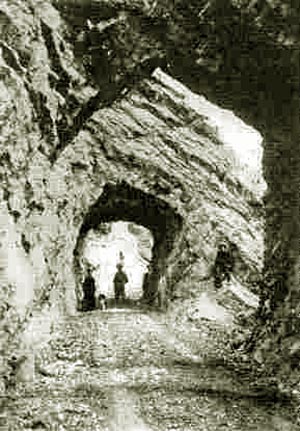 < > < >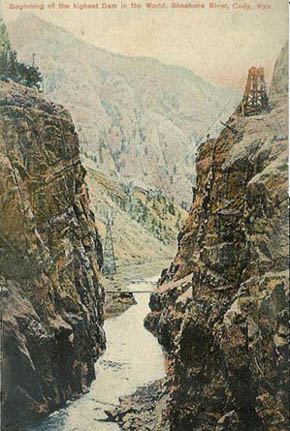
Left: Wagon Road Tunnels, approx. 1905.
Right: beginning of construction Shoshone Dam, showing towers supporting cables on which
men and equipment were lowerd to the valley floor, approx 1905.
Construction of the dam started in 1905, but the first contractor soon abandoned the job.
Difficulties encountered included no
ready source of sand or gravel for the concrete and problems when 1/2 of the
entire annual flow of the Shoshone River came in one thirty-day period. A second contractor took
over the work in 1906. Accordingly, actual construction of the dam commenced in 1907. The same year, the Reclamation Service was
required to take over the construction of the Corbett Tunnel portion of the job.
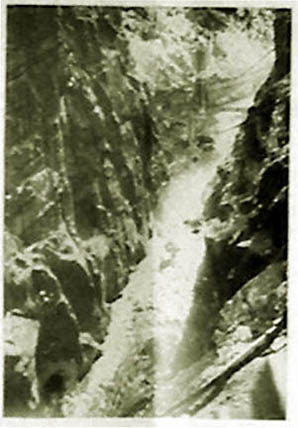 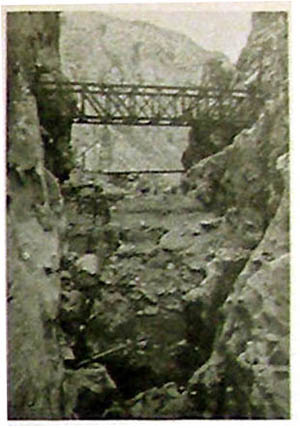
Left: Commencement of construction, 1907
Right, Constructing foundations, 1908, showing riveted steel bridge constructed in
1908.
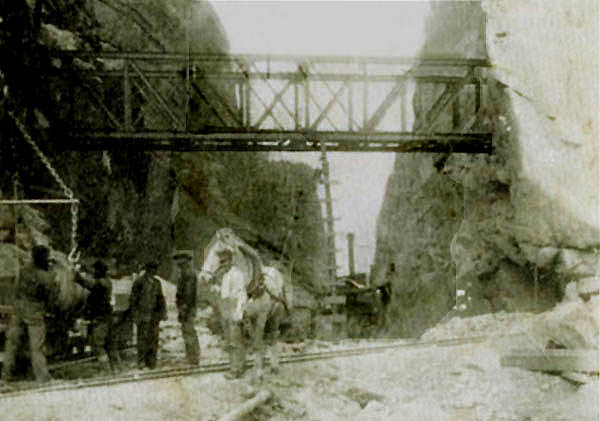
Moving stones with use of steel bridge.
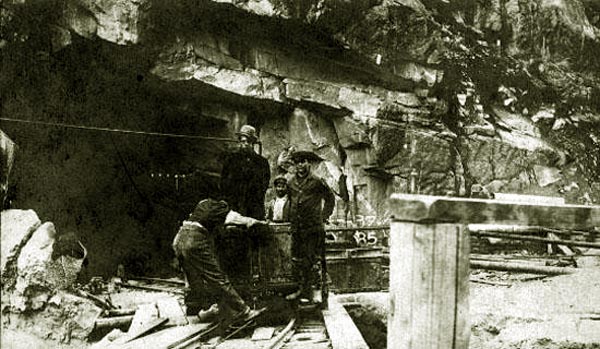
Workers on the Dam, 1908.
The project was delayed by Spring floods.Floods damages the cofferdams in 1906 and 1907. A flood in 1908 filled the
foundation trench wih silt and rocks which had to be reexcavated. In 1909, a flood overflowed the portion of the dam which
had been completed but did no
major damage.
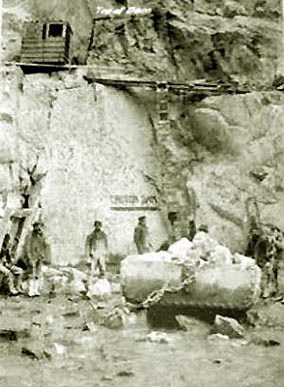 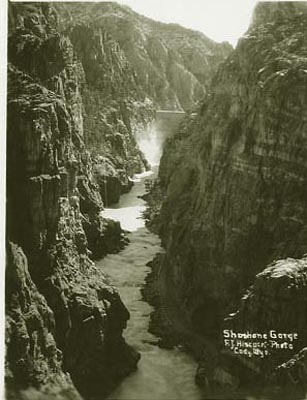
Left, Dam under contruction, approx 1909. Sign on canyon wall marks the height of
the New Croton Dam in New York, at the time the Country's hight dam.
Right, Dam under construction approx. 1909. Photo by F. J. Hiscock.
.
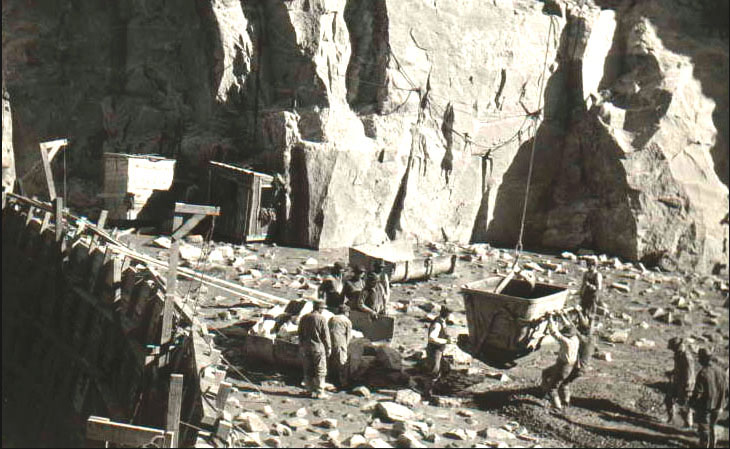
Pouring concrete. Shoshone Dam.
When the Shosone Dam was completed in 1910, it was the highest concrete arch dam in the world, with a height of
325 feet, a thickness of 108 feet at its base, and a width of 200 feet across
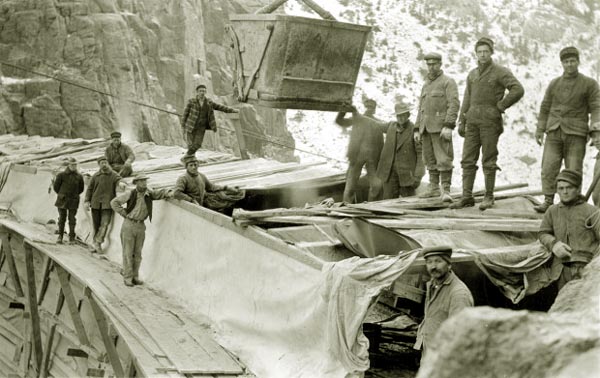
Last pouring of concrete, January 15, 1910.
Next page: Cody Dam continued.
|